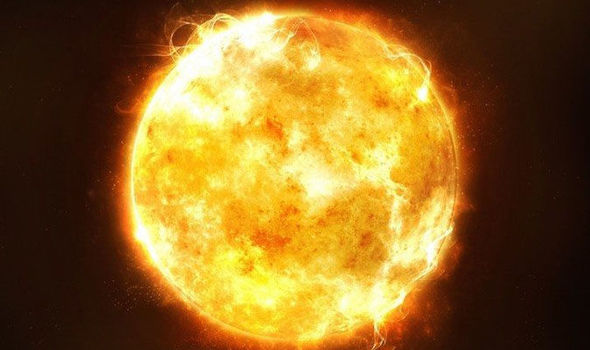A Trinity researcher has led an international team of scientists to a major new discovery about how an exotic matter – plasma – behaves in the sun’s atmosphere, which could lead to the development of more efficient nuclear generators for humans.
Dr Eoin Carley, a postdoctoral researcher in Trinity and the Dublin Institute for Advanced Studies (DIAS), was at the head of a collaborative effort between Irish and French researchers, who used radio telescopes and ultraviolet cameras on a NASA spacecraft to better understand how plasma behaves under the sun’s extreme heat.
Their findings have been published in international journal Nature Communications. The work was funded by the Irish Research Council.
On earth, matter mostly takes the form of solids, liquids or gases, but the majority of the universe is composed of plasma – a highly unstable and electrically charged fluid. The sun is made up of plasma.
Given the scarcity of plasma on earth, it has remained largely shrouded in mystery. Special laboratories on earth can recreate the conditions of outer space in order to explore it, but the sun offers scope to examine it in conditions that are often too extreme for the manually constructed laboratories.
The Irish scientists worked with scientists at the Paris Observatory and performed observations of the Sun with a large radio telescope located in Nançay in central France.
In a press statement, Carley – who previously worked at the Paris Observatory – said that by combining the radio observations “with the ultraviolet cameras on NASA’s space-based Solar Dynamics Observatory spacecraft”, the scientists were able to “show that plasma on the Sun can often emit radio light that pulses like a light-house”.
“The light-speed particles shine bright at radio wavelengths, so we’re able to monitor exactly how plasmas behave with large radio telescopes”, he said.
“We have known about this activity for decades”, Carley continued, “but our use of space and ground-based equipment allowed us to image the radio pulses for the first time and see exactly how plasmas become unstable in the solar atmosphere”.
Peter Gallagher, a senior professor and the head of astronomy and astrophysics at DIAS, who also collaborated on the project, said that “by studying how plasmas become unstable on the Sun, we can learn about how to control them on Earth”.
Carley continues to work closely with the scientists in France, and hopes to soon study the same phenomena using both French instruments and newly built Irish equipment.







